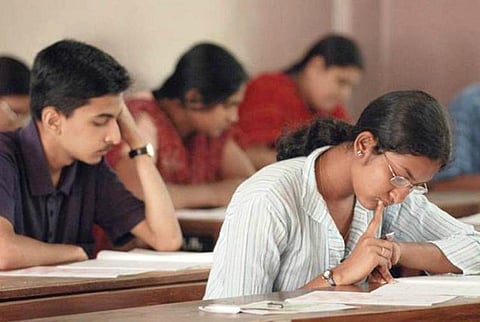

The print, electronic and social media in India have all, in the last 36 hours, been full of reports of the latest National Institutional Ranking Framework (NIRF) results, published by the Union HRD Ministry.
As always, the factoids in the newly-released rankings offers institutions a fertile ground for subjective interpretation of the numbers and data. Or for some higher education institutions (HEIs) like those in Tamil Nadu, an opportunity to gain brownie points touting their rankings.
But then, strangely, very few voices are heard actually questioning the very idea of a government trying to “rate” or assess institutions across the country using a one-size-fits-all approach (despite a so-called diverse methodology).
Everyone involved in higher education knows that the HRD Ministry and its instrumentalities hold a tight leash on almost every kind of college or institution in India. Very few HEIs ever get any chance for innovating at a micro level to make an impact on the lives of millions of higher education aspirants.
But then the all-powerful controlling body, which holds the purse strings for public funded institutions; the leash to control even private unaided educational entities, or act as gate-keeper who is not prepared to allow even high quality providers from other countries, has decided to play judge and jury and “rate” institutions, with a single “one-size-fits-all” approach. With no space to demur, institutions across India simply fall in line. And gloat over whatever ratings are dished out.
For the record, India has over 720 universities, more than 38,400 colleges and about 12,000 stand-alone institutions with a combined intake capacity of 28 million.
Now, the Union HRD’s Ministry’s charter by its own standards is to create and roll out education policy and determine standards on all aspects including research. To quote the Outcome budget of 2016-17, “The Department (of Higher Education) is also entrusted with the responsibility to expand and develop technical education, to administer scholarships, to foster and encourage studies and research in Sanskrit and other classical languages and to co-ordinate its functions with activities of UNESCO.”
Where then did this idea of government itself involving in “rating” of institutions come in, is quite a mystery.
As every college owner or educationist knows, the idea of rating is clearly a marketing concept. We have seen “annual issues” of magazines carrying “India’s top institutions” or “India’s best Universities” articles. But even a cursory glance would show that many such “professionally managed” surveys are “sponsored”. And the biggest advertiser of the magazine would invariably be one of the top ranked institutions, which makes the entire process hollow.
But this essay is not to take away the rigor of actually ranking institutions in a scientific manner. Even the NIRF survey methodology is not flawed (after all it apes in most aspects and parameters the Times Higher Education supplement survey methodology).
But here is the issue: No university in India can exist without taking express permission from the MHRD and the UGC for launching any course, setting new standards or creating tie ups with foreign universities. They can hardly experiment with something like fully online or virtual education, as there is an express ban on online education in India by private or deemed universities.
Public funding of higher education in India is less than 2% of the GDP. Even among the allocated funds, an overwhelming sum goes to the elite institutions like IITs, IIMs, NITs, central universities and centrally funded institutions. For instance, IITs received over INR 4500 crore funding from the government in 2015-16. No wonder they get high ratings. (How else can the MHRD justify the funding?)
Nearly 85% of India’s students study in affiliated colleges, and 90% of them in the undergraduate programmes. Hardly 1% of people entering undergraduate, go on to do research work. Access to inexpensive public funded colleges and affordability to enter private institutions, are both huge issues for a majority of students. Educational loans in India are over INR 60,000 crores and according to latest reports, banks which are unable to recover student loans (as job opportunities and placement figures shrink) are selling off the loans to private asset reconstruction companies. And the latter uses strong arm methods against the poor parents.
All this means a majority of the students and teachers in the 37,000 higher education institutions are forced to learn outdated curricula, in substandard facilities, and amid insanely high teacher shortage (an RTI question from a large national daily showed more than 30 per cent vacancies even in IITs and NITs in 2014-15). And still they get little academic support from the government, other than scholarship doles.
And the same official system, which is running an ossified system and bureaucracy, creates a methodology to “rate” and “rank” institutions for which they offer no support. The results of a bad system are obvious: A university without a Vice Chancellor for the past one year, and most of whose university departments have embarrassingly small number of students, and no major recruiter to showcase, gets an all India rank. And the joke only begins there.
Definitely, the MHRD should stop this charade and stick to its mandate and offering support and helping the institutions reach international levels.
The government which allocates Plan grants to HEIs, and hold them under its tight leash, ought to be making a little more effort to afford them the independence to create their own curriculum, teaching – learning methodology, or run innovative short courses that offer competence based education to meet market demand.
Create a better university governance system devoid of political and bureaucratic interference and run only by academic leaders of repute.
Change the laws to allow universities to themselves select their academic leaders.
Also, the MHRD should be doing much more to help universities industry to do participatory research, make the students more employable for an increasingly complex business and industry ecosystem, rather than playing the role of a judge and jury of a system that it presides over. That too rather infamously and badly.